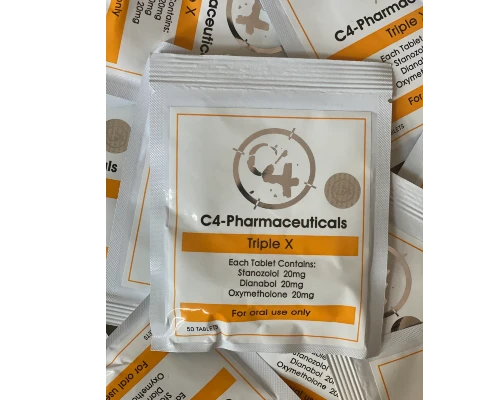In the world of fitness and bodybuilding, individuals often seek ways to enhance their performance and achieve their goals faster. One such method is through the use of supplements like Anadrol, a synthetic anabolic steroid. While Anadrol has gained popularity for its ability to promote muscle mass gains and enhance strength, it is important to be aware of its potential concerns regarding hormonal imbalance. In this article, we will delve into the relationship between Anadrol and hormonal imbalance, exploring the potential risks and how to mitigate them.
What is Anadrol?
Anadrol, also known as Oxymetholone, falls into the category of anabolic-androgenic steroids (AAS). Originally developed to treat conditions such as anemia and osteoporosis, it was later discovered to have positive effects on muscle growth and performance enhancement. Bodybuilders and athletes often turned to Anadrol for its potential to rapidly increase muscle mass and strength.
Hormonal Imbalance and Anadrol
When using Anadrol, one of the primary concerns is hormonal imbalance. Anadrol can interfere with the body’s natural hormone production and regulation due to its androgenic properties. It may cause fluctuations in various hormone levels, leading to an imbalance that can have adverse effects on overall health.
Estrogen Imbalance
One of the main hormonal imbalances associated with Anadrol use is an increase in estrogen levels. Anadrol can convert to estrogen through the process of aromatization. Elevated estrogen levels can result in water retention, gynecomastia (the enlargement of breast tissue in males), and increased fat storage. Monitoring estrogen levels regularly and incorporating an aromatase inhibitor may help mitigate these effects.
Testosterone Suppression
Anadrol can also suppress the body’s natural production of testosterone. Testosterone is a crucial hormone for muscle growth, strength, and overall well-being. When testosterone levels drop due to Anadrol use, individuals may experience symptoms such as decreased libido, fatigue, and mood swings. Post-cycle therapy with testosterone-boosting supplements or medications can help restore natural testosterone production.
Liver Toxicity
Another concern related to Anadrol use is liver toxicity. Anadrol is an orally active steroid, which means it must pass through the liver for metabolism. Continuous and high-dose usage of Anadrol can strain the liver, potentially leading to liver damage or other complications. Regular liver function tests and limiting the duration of Anadrol cycles can help minimize the risk of liver issues.
Adrenal Suppression
Anadrol use may also impact adrenal gland function. The adrenal glands play a crucial role in hormone production and regulation. Prolonged use of Anadrol can suppress adrenal function, leading to adrenal insufficiency and potential imbalances in various hormones produced by the adrenals. Post-cycle therapy and supporting adrenal health with supplements can help mitigate this concern.
Cardiovascular Risks
Anadrol use has been associated with potential cardiovascular risks. It can negatively impact lipid profiles, increasing LDL cholesterol levels (commonly referred to as “bad” cholesterol) and reducing HDL cholesterol (the “good” cholesterol). This shift increases the risk of cardiovascular diseases such as heart attacks and strokes. Regular cardio exercise, a heart-healthy diet, and keeping Anadrol doses within safe ranges can help minimize these risks.
Mitigating the Risks
To minimize the potential concerns related to hormonal imbalance while using Anadrol, it is important to follow certain guidelines:
1. Consult a healthcare professional: Before starting any steroid cycle, it is crucial to consult with a healthcare professional who can provide personalized guidance and ensure your safety throughout the process.
2. Stick to recommended dosages: Abuse or exceeding recommended doses of Anadrol can significantly increase the risks associated with its use. Always adhere to the recommended dosage guidelines and cycle lengths to reduce the chances of experiencing severe hormonal imbalances.
3. Implement post-cycle therapy (PCT): PCT aims to restore natural hormone production and balance after an Anadrol cycle. It typically includes testosterone-boosting supplements or medications, estrogen blockers, and liver-supportive agents. Following a well-structured PCT can aid in reducing the impact of hormonal imbalances.
4. Monitor hormone levels regularly: Keeping an eye on hormone levels through blood tests can help identify any imbalances and allow for adjustments to the supplement regimen or treatment plan accordingly.
Conclusion
While Anadrol can offer substantial gains in muscle mass and strength, potential concerns regarding hormonal imbalance must not be overlooked. Estrogen imbalance, testosterone suppression, liver toxicity, adrenal suppression, and cardiovascular risks are among the issues associated with Anadrol usage. By adopting proper precautions, such as consulting professionals, adhering to recommended dosages, implementing PCT, and monitoring hormone levels, individuals can enjoy the benefits of Anadrol while minimizing the risks of hormonal imbalance and associated complications. Remember, responsible and informed usage is the key to maintaining a healthy and well-functioning body throughout the fitness journey.




